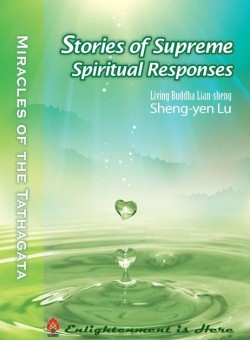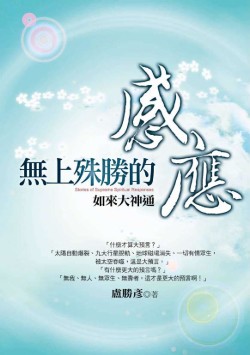 Appendix: The Perfect Bliss of Hevajra: There is Neither Creation Nor Destruction
Appendix: The Perfect Bliss of Hevajra: There is Neither Creation Nor Destruction
(A dharma discourse given by His Holiness Living Buddha Lian-sheng on September 9, 2012 at Rainbow Temple, North Bend, Washington, U.S.A.)
Book 223 Stories of Supreme Spiritual Responses《無上殊勝的感應》「2012年9月9日彩虹雷藏寺開示」
Translated by Janny Chow
A US Daden Culture Publication
(continued from pg A7 , TBN issue # 1145)
These are the most important goals of this fire offering to the Jambhalas today.
We will continue with the discourse of Exposition on Hevajra. Hevajra has great super power. When we practice the Hevajra Sadhana, we visualize his consort Nairatmya and the retinue of eight dakinis. In Vajrayana, scriptures representing skillful means are referred to as Father Tantras, while scriptures representing wisdom are referred to as Mother Tantras. The consorts of Hevajra represent wisdom, and it is through the existence of Hevajra that they are able to attain a realistic kind of great bliss. Therefore, Hevajra and his consorts represent skillful means and wisdom respectively. The union of skillful means and wisdom represents the union of form and emptiness. In Vajrayana, the sexual union of Father Buddha and Mother Buddha has two significances: the union of skillful means and wisdom as well as the union of form and emptiness. Such unions give rise to realization and enlightenment. Emptiness represents wisdom and form represents skillful means. The union of Hevajra and his consort gives rise to this kind of great divine bliss.

When you read this chapter, intuit as much as you can from it. Hevajra represents firmness, a quality of earth. Just like the vajra scepter, our resolve to reach enlightenment is firm and eternal, qualities represented by earth. Water symbolizes fluidity. There is an idiom that describes how circulation of commodities is good for business and when the amount of money flowing in exceeds that flowing out, one has abundance. Similarly, Hevajra Sadhana also brings us water which is equivalent to money. Through the practice of Hevajra Sadhana, “drops” in the body will increase, and inner fire will arise. Earth = firmness, water = drops, fire = inner fire, and wind= qi. There are different types of qi circulating inside the body. The five most important forms of qi are: shangxing qi [udana], xiaxing qi [apana], ming qi [prana], bianxing qi [vyana] and pingdeng qi [samana]. Our physical bodies are made of earth, water, fire, and wind. The universe is also made of these four elements. Take Vairocana Buddha for example. He is accompanied by four female attendants: Vajra Song, Vajra Dance, Vajra Garland, and Vajra Play. Vajra Song in the most wonderful sound, Vajra Dance is beautifully dancing, Vajra Garland dresses up beautifully, and Vajra Play is union, which also represents the union of emptiness and form, as well as union of wisdom and skillful means. We can also say it is the union of wisdom and compassion as compassion is required for skillful means.
(to be continued)
Leave a Reply